The Mountain Bluebird (MOBL) is a small sized thrush that prefers open space habitats in Western North American desert and mountainous regions. They are year around residents in the western states however migrate as far north as Alaska to breed and as far south as Central America during the winters. The male MOBL is a vibrant blue colour while the female has more subdued colours with strong blue wing colouration. The Mountain Bluebird is the state bird of Idaho and Nevada.
A few weeks ago a lone female Mountain Bluebird arrived in an open field on the western reaches of Lynde Shores Conservation Area in Whitby and quickly became a local celebrity amongst birders and bird photographers. For many it was their first time seeing one of these beautiful birds.
I was twice able to visit this bird and I’m thankful for one of those opportunities being with nice light for photography. The following are some of the images I was able to obtain of her. These photographs were taken last Friday morning, December 11th.
The object of an image is generally obvious and we always think about it before releasing the shutter however care must always be taken to consider the back ground of every image you take. Often the difference between a snapshot and a great photograph is the back ground. The first two images in this series have the black walls of a barn creating the back ground which creates a high contrast with bird. The great distance between the bird and the barn allowed the use an aperture of f/8 to keep all of the bird in focus and still blur the back ground enough that the barn was completely indistinguishable.
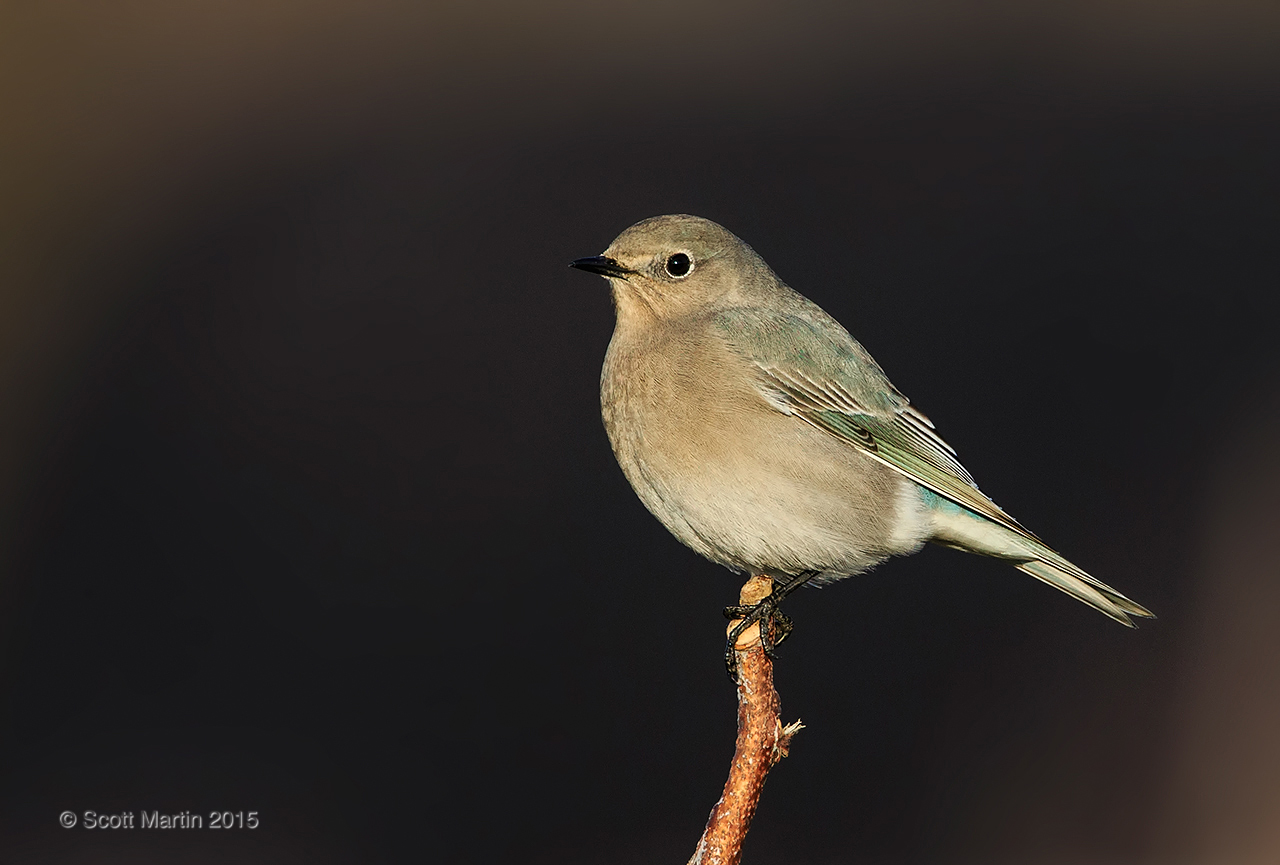 .
.
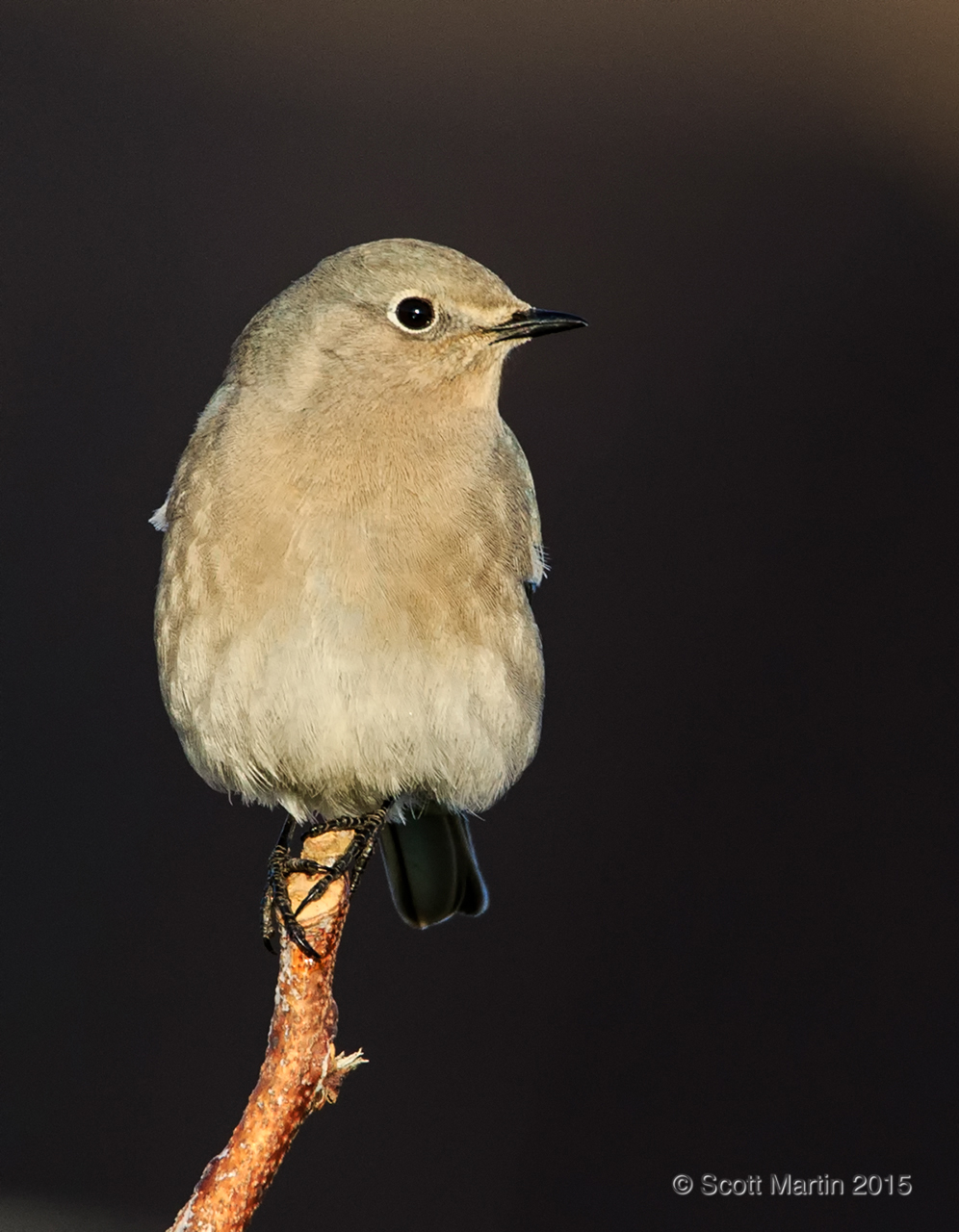
For the next two images I moved not more than ten feet in order to replace the barn as the back ground with a coniferous tree line in order to replace the black back ground with a green one. Although this is very subjective, I prefer the green which is a bit more natural looking and provides a better contrast with the beak of the bird. Compare images one and four and then two and three. Each pair is pretty much the same compositionally except for the back ground colour. Do you have a preference?
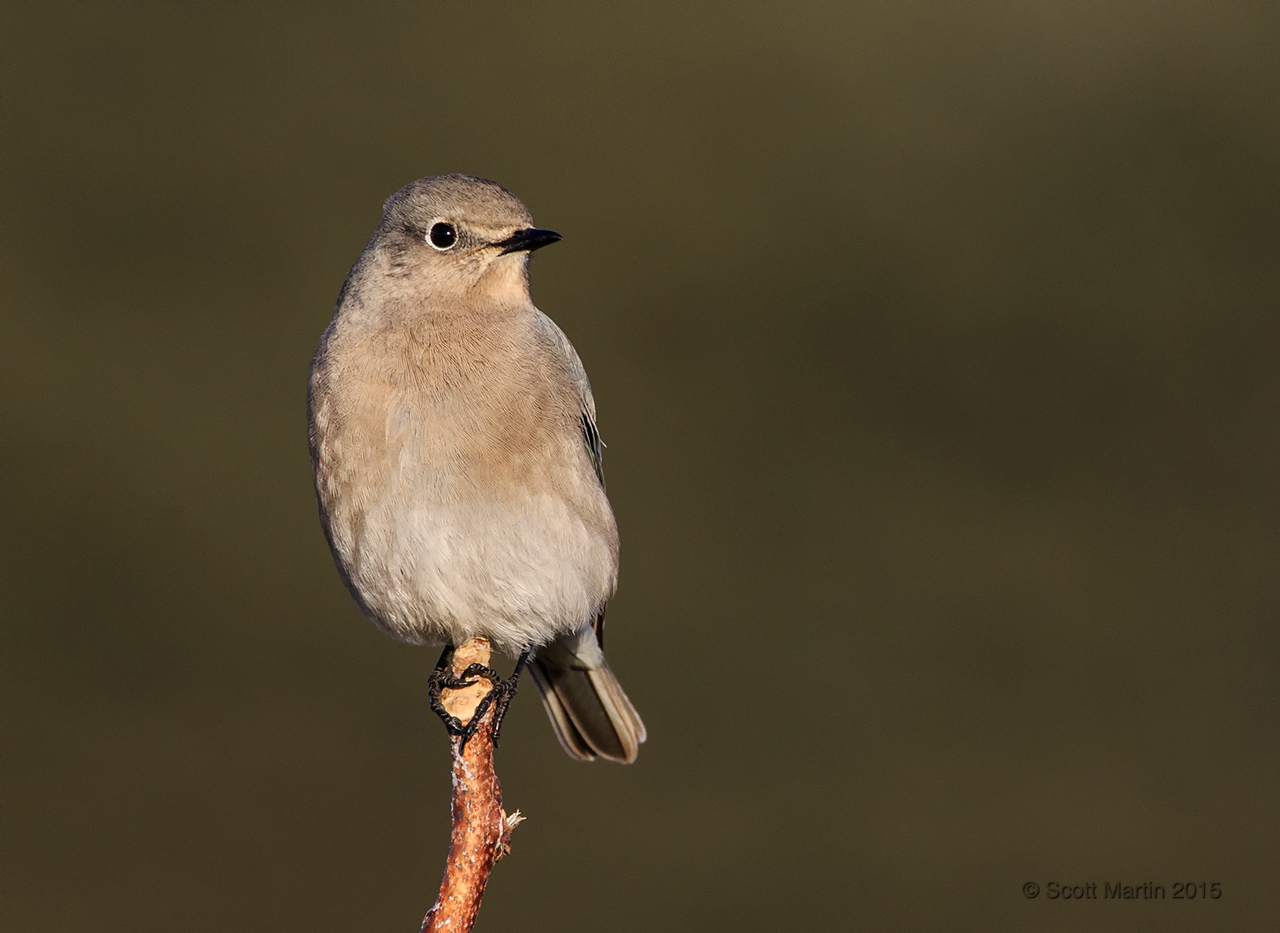 .
.
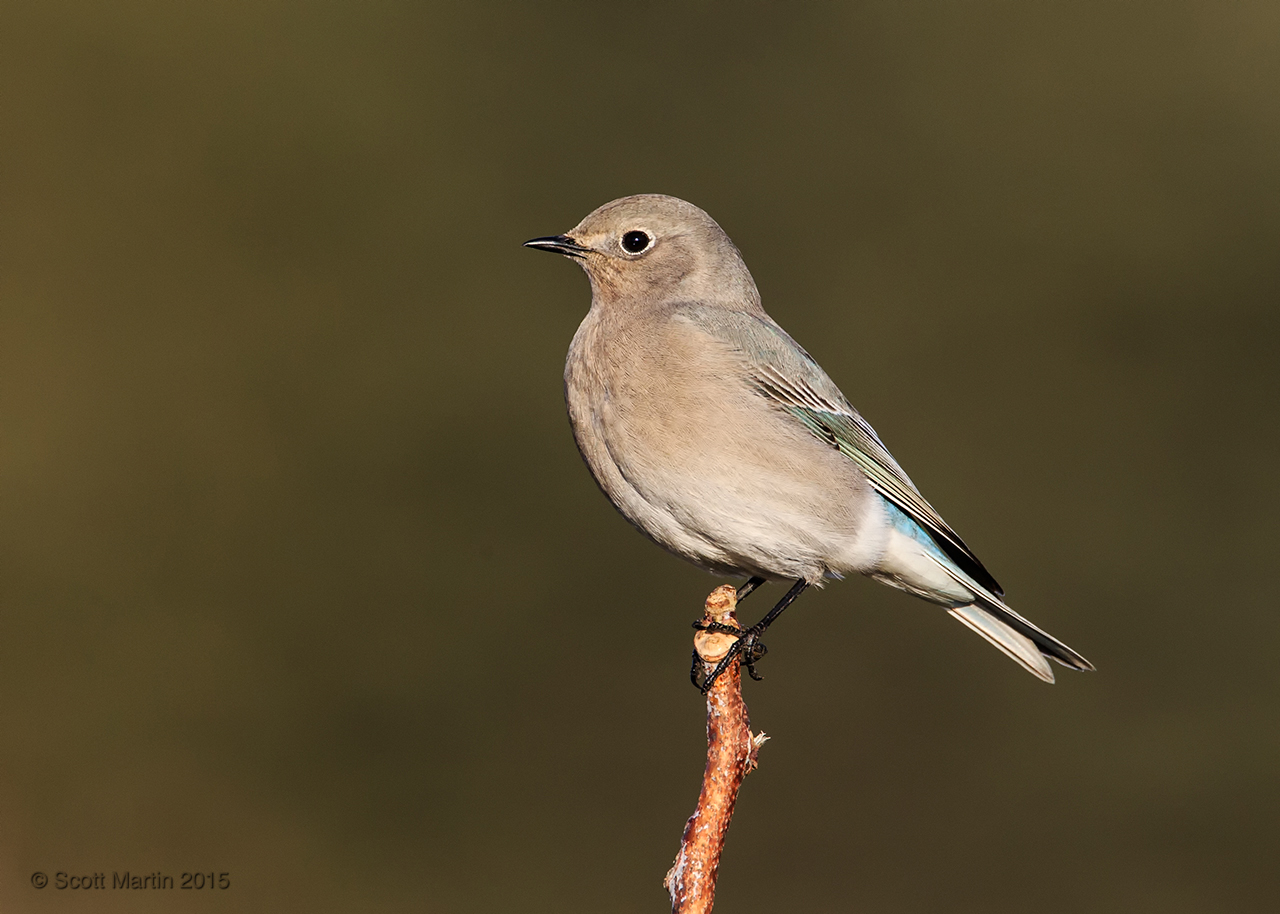
The remaining images are from a different perch which was located such that overgrown grasses provided the back grounds. The first three images are against a ‘white’ grass/hay back drop creating the brightest of the BG’s and great contrast with the bird….and it also complimented the rather ugly bamboo perch!
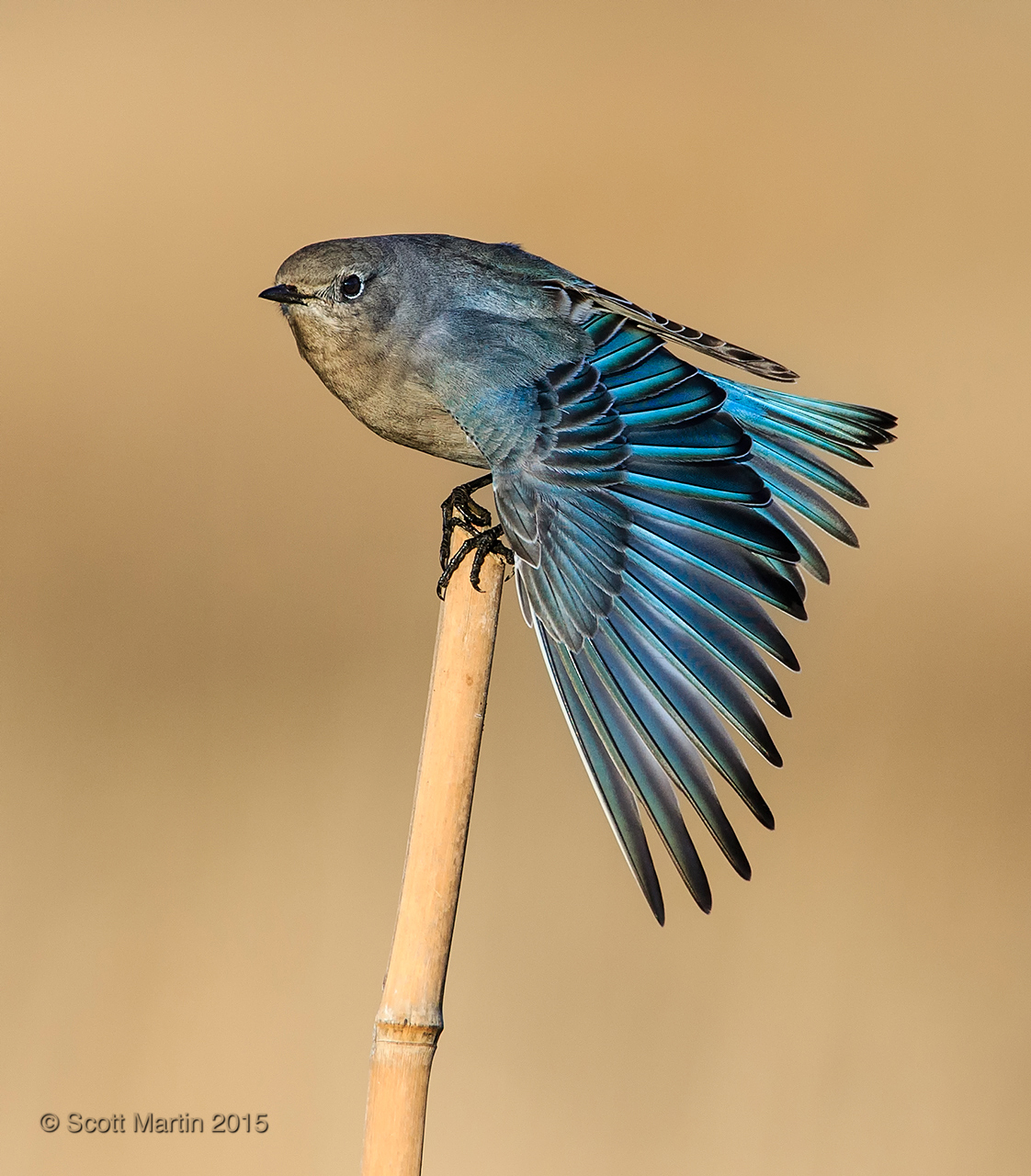
.
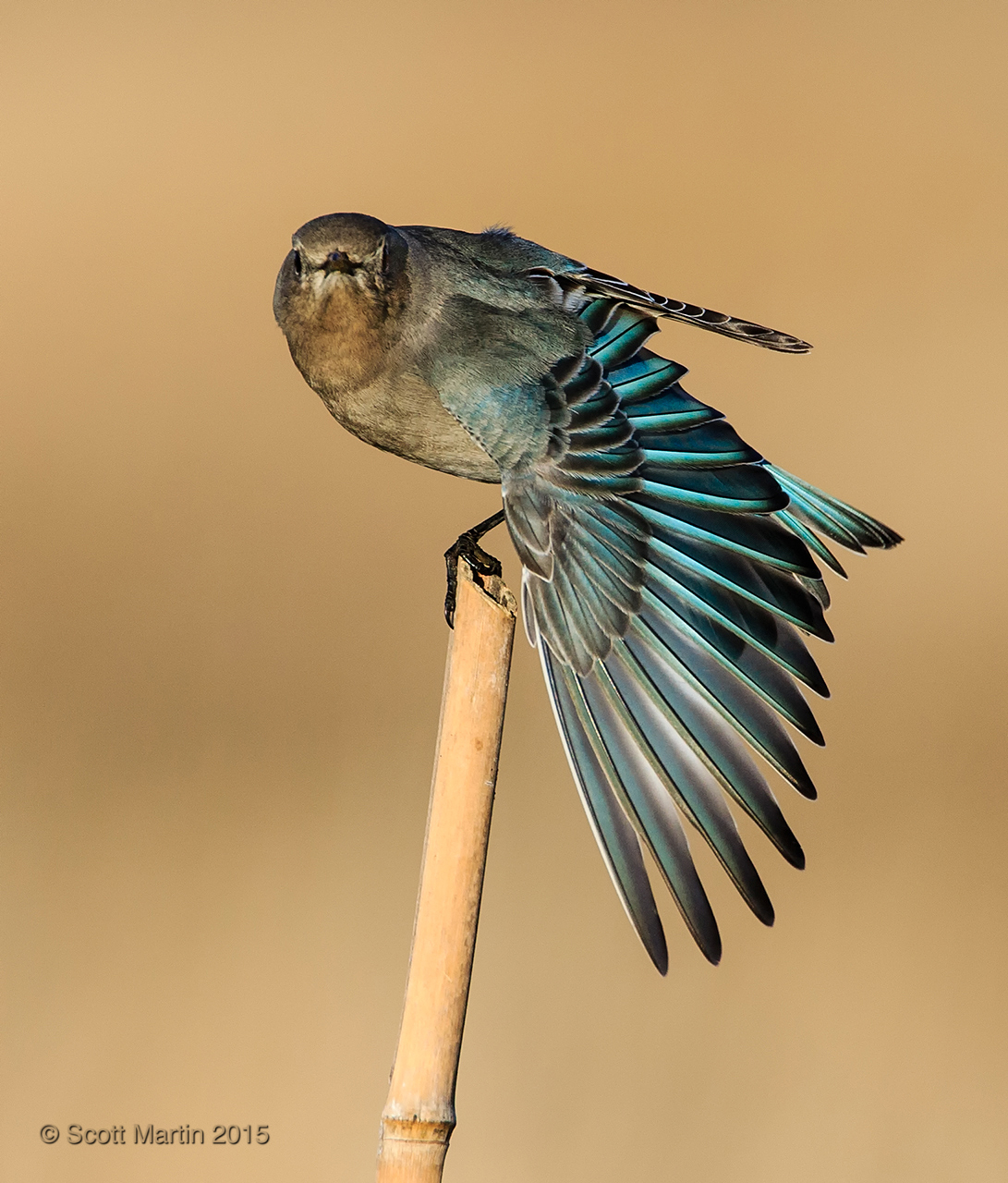
.
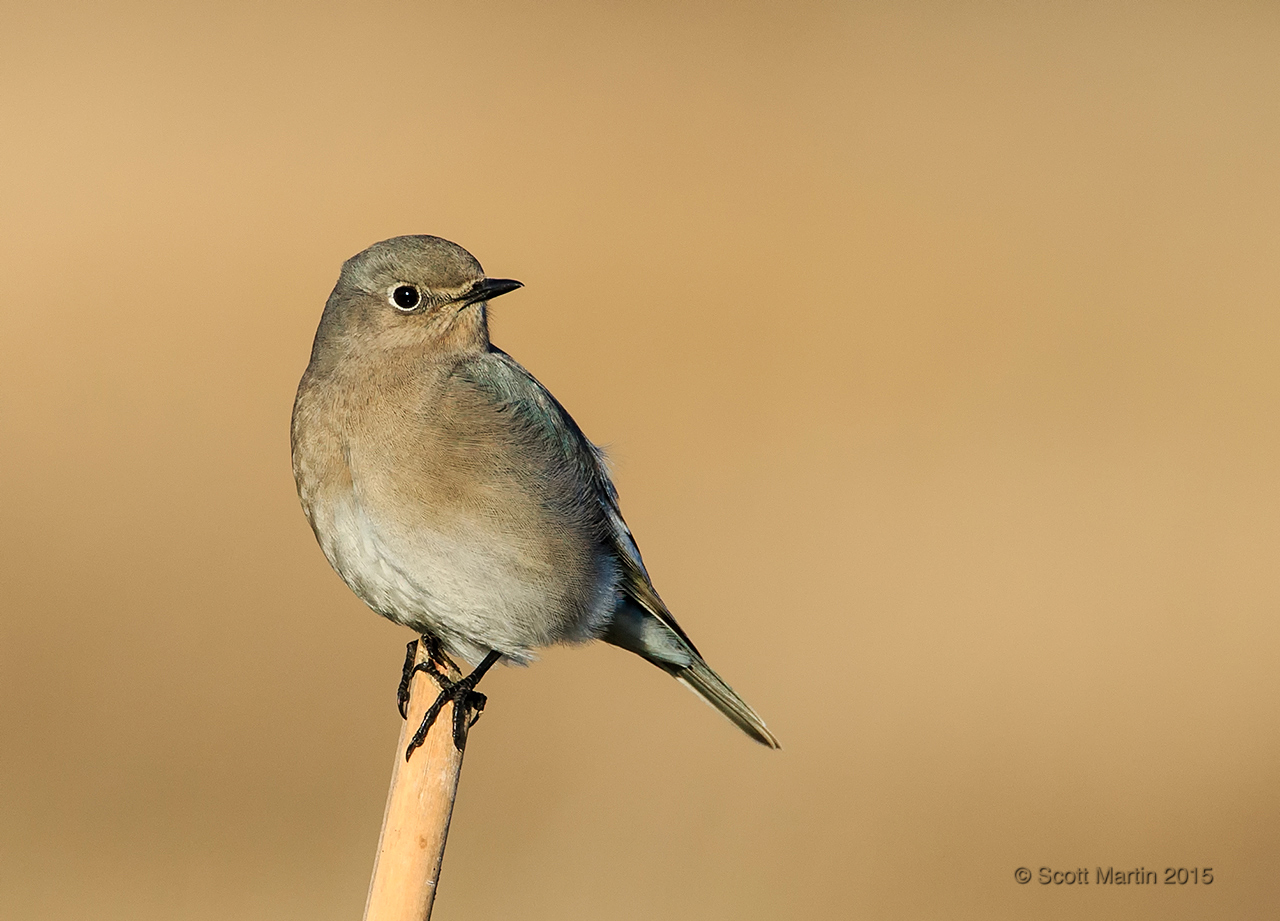
The final three images are against darker grasses that create a back ground shade which is perhaps my favourite of all we’ve looked at today with a nice warm tone that compliments the colours of the bird nicely.
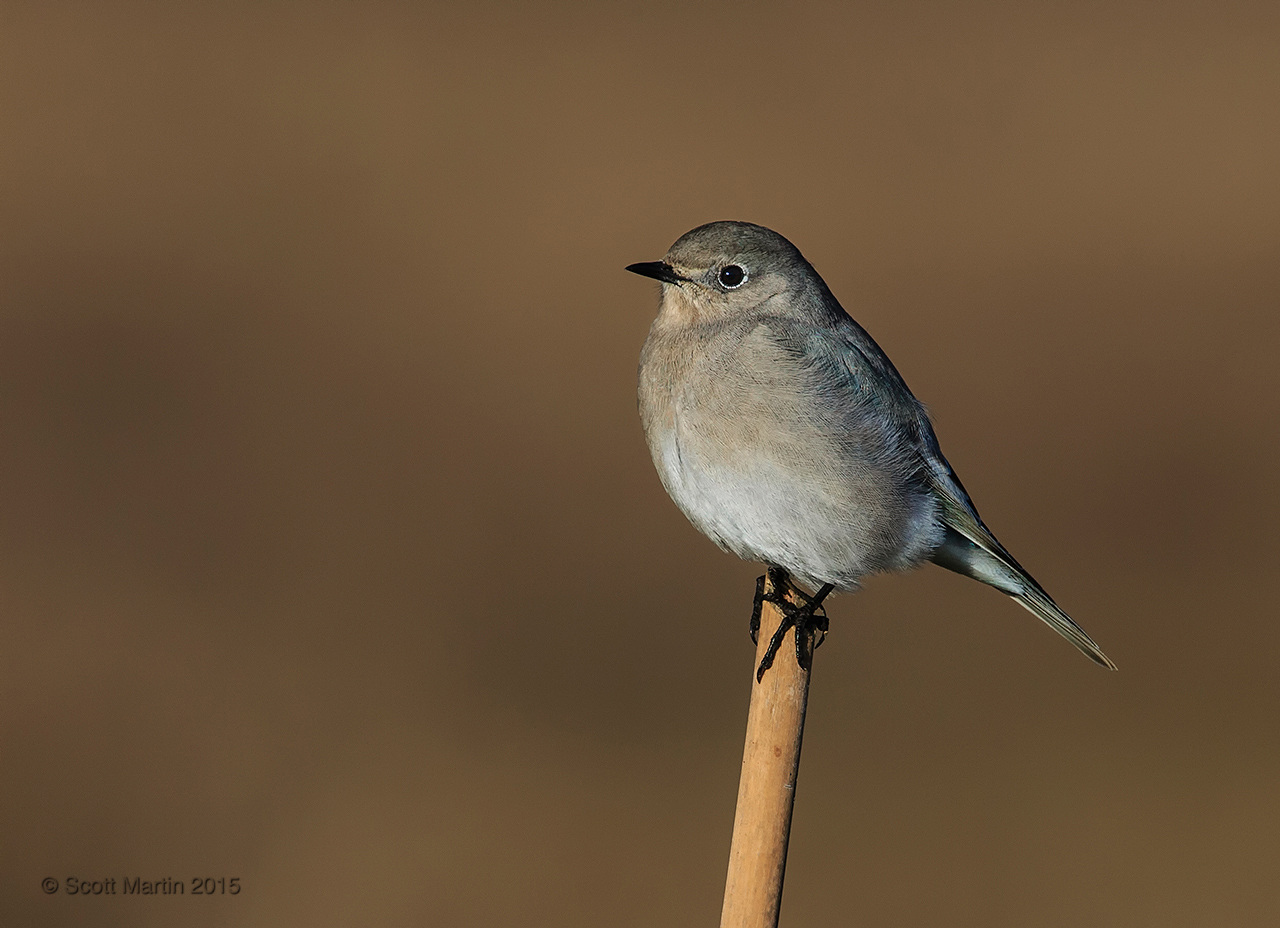 .
.
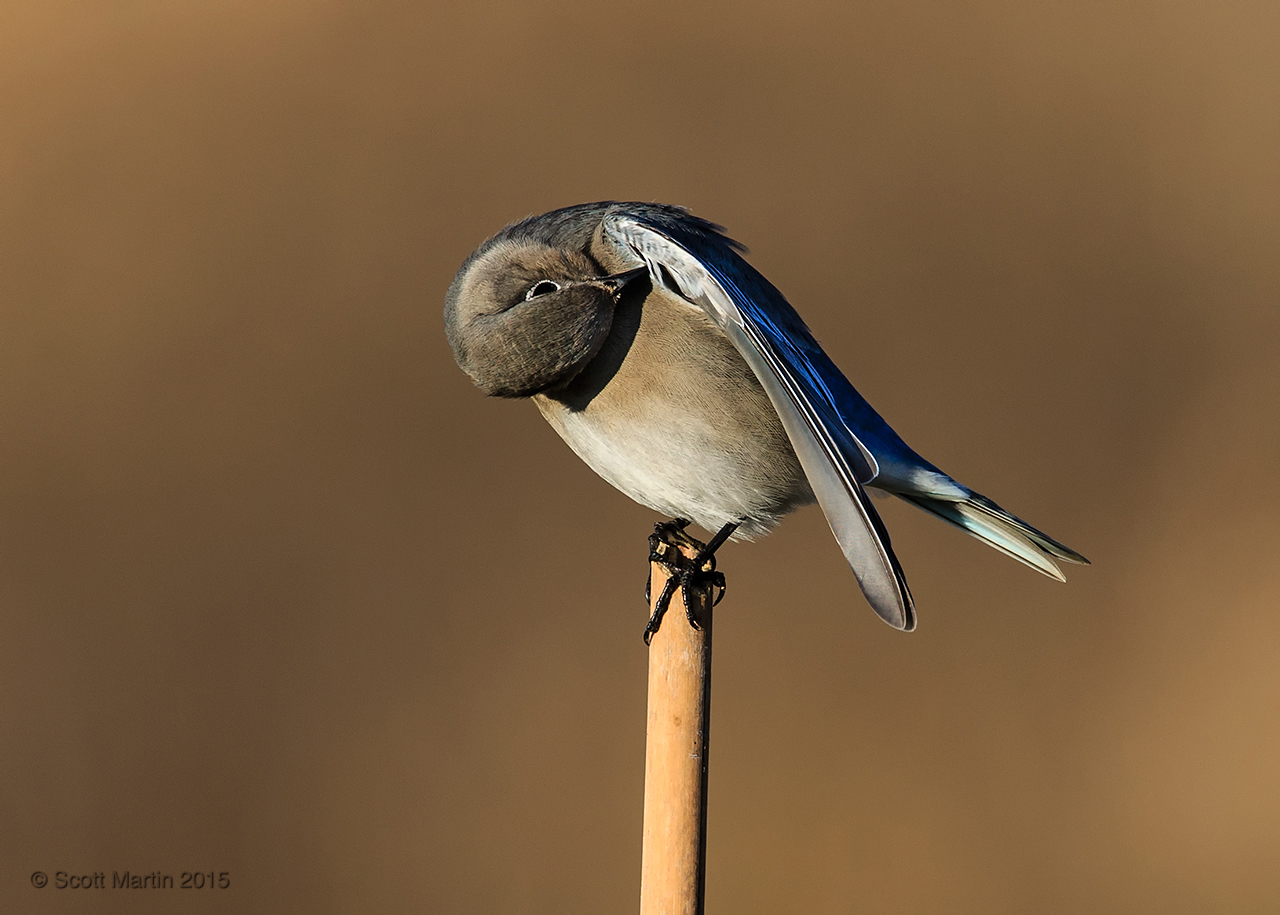
When a rare bird makes an appearance hundreds of birders and photographers will make a point of seeing the celebrity. Typically that means a plethora of photographs will show up on various photo sharing websites and soon they begin to look quite similar. It’s wise to observe the bird and its various behavioural displays and look for that unusual shot. Sometimes even the very common act of preening will provide that unique image.
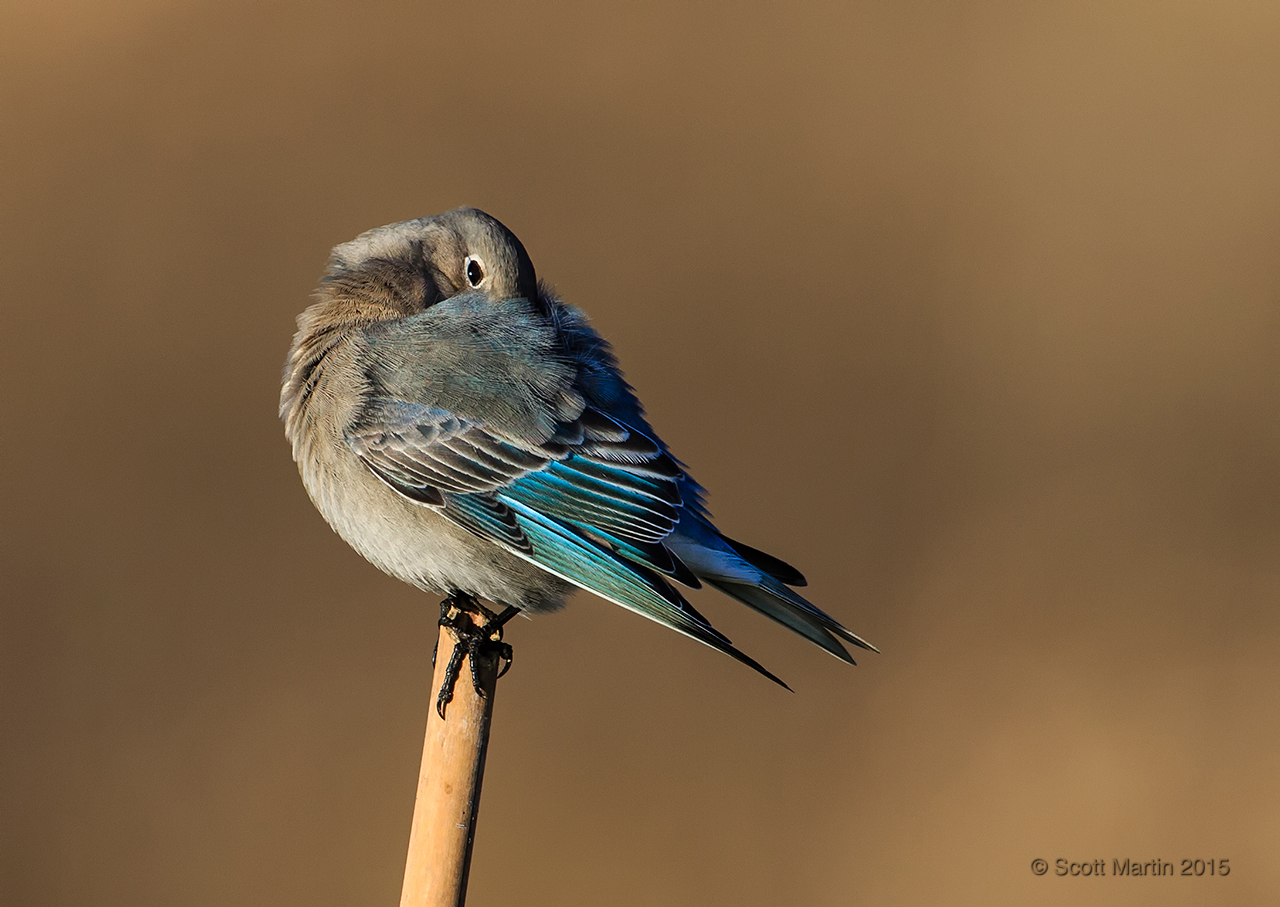
The Mountain Bluebird was last seen early Saturday morning when just after sunrise it was observed flying west, presumably to return to its home territory. Often these lone birds that get off track while migrating don’t survive the rigours and dangers of travelling long migration distances alone without the help and safety that comes with travelling in numbers. She certainly looked healthy when I took these pictures the day before she left so I trust that by now she has been re-united with her family.
All of these images were taken using a Canon 1Dx and 500/4 lens with 1.4 x TC for an effective focal length of 700mm.

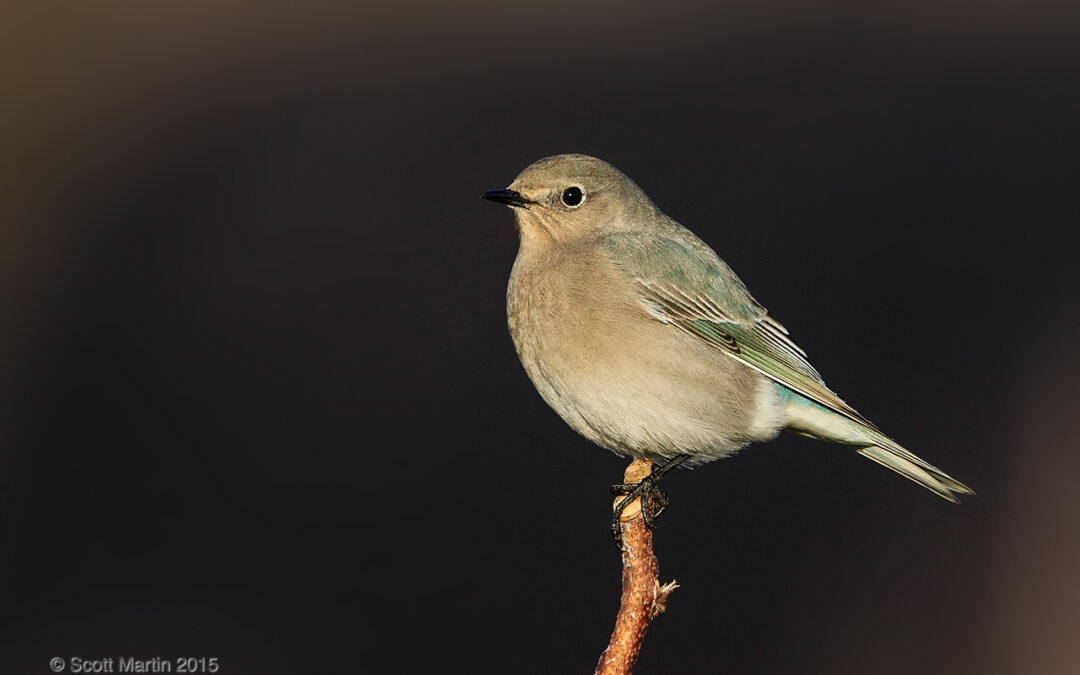
A marvellous collection of images Scott, a great demonstration of how the background signficantly changes the final composition of an image. I prefer the lighter backgrounds. Seeing and photographing the Mountain Bluebird was a thrill for me as well and I am looking forward to a future trip west to see both the male and female in their natural habitats.
Thanks Arni and I’d be glad to head west any time. I’m now wondering if what we thought was a Western Bluebird in Utah last month was actually a male Mountain Bluebird. We are going to have to go back to find out 🙂